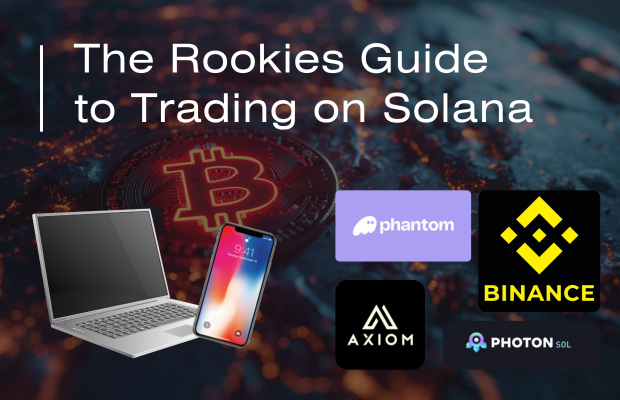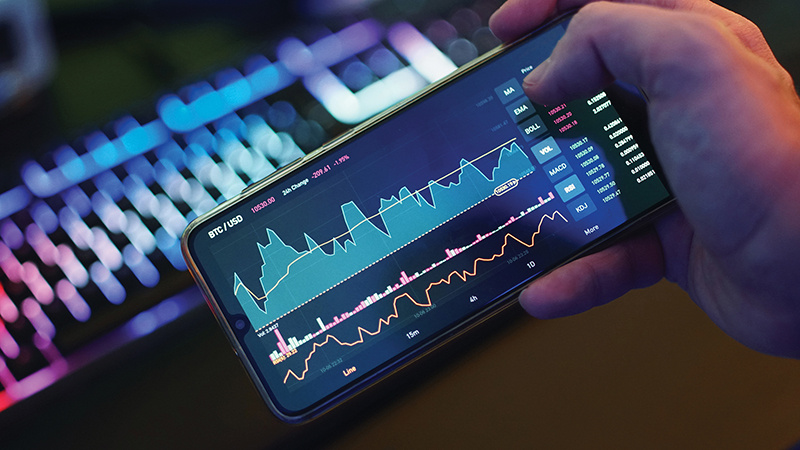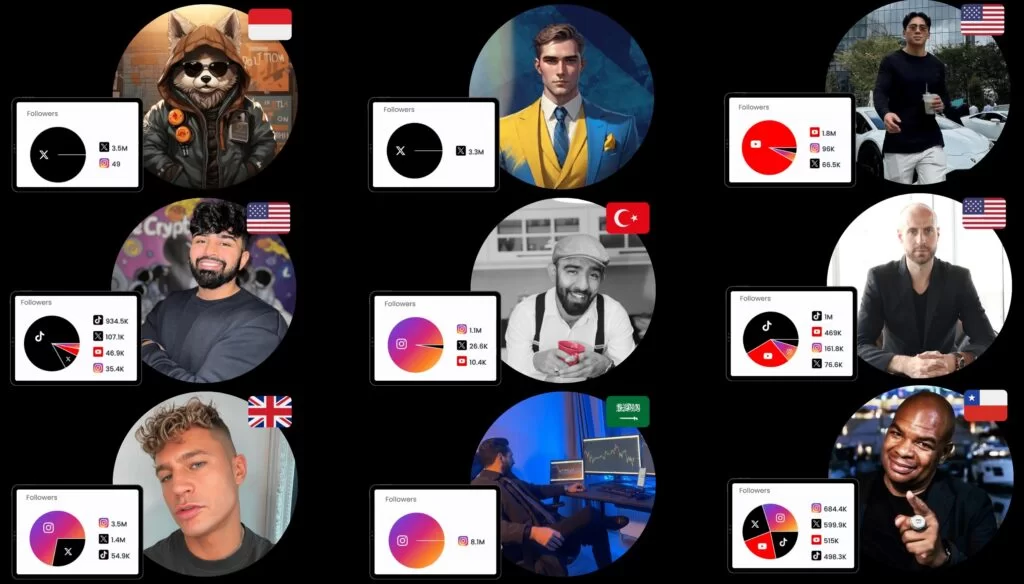When I first stumbled into cryptocurrency, I was a complete novice.
Like many, I bought Bitcoin (BTC), stored it on a Ledger, and sat refreshing my app, waiting to get rich.
When I first stumbled into cryptocurrency, I was a complete novice.
Like many, I bought Bitcoin (BTC), stored it on a Ledger, and sat refreshing my app, waiting to get rich.

That initial excitement fades fast when you realize crypto is more than just hodling BTC.
Altcoins, especially on the fast and low-cost Solana blockchain, offer a thrilling yet complex world of opportunities.
But the deeper you dive, the more you encounter scams, rug pulls, and emotional traps.
This guide is your shortcut to starting strong.
I’ll cover the essential setup for trading on Solana, explore trading styles like “trenching” versus bag holding, and help you separate trustworthy Key Opinion Leaders (KOLs) from opportunistic farmers.
Plus, we’ll highlight charts to dismiss instantly to avoid bad trades. Let’s get started.
A reliable computer or smartphone with a stable internet connection is your foundation.
A computer is preferred for its larger screen, better multitasking, and access to advanced tools like charting software.

Phones work for quick trades, but their smaller screens can make it harder to analyze data or spot scams.
Security is critical: use a dedicated device or ensure yours is free of malware.
Enable two-factor authentication (2FA) on all accounts, and never click suspicious links.
Solana’s fast-paced ecosystem demands constant vigilance—hackers target crypto users relentlessly.
A crypto wallet isn’t a physical wallet but a secure software or hardware tool to store, send, and receive your digital assets.
For Solana, Phantom Wallet is a top pick due to its intuitive interface, compatibility with Solana’s ecosystem, and robust security features.
Download it from the official website (phantom.app) to avoid phishing scams.
During setup, you’ll receive a 12- or 24-word seed phrase—write it down offline and never share it.
Phantom integrates seamlessly with Solana-based decentralized exchanges (DEXs), letting you trade tokens directly.
Alternatives like Solflare are also solid, but Phantom’s popularity makes it a go-to for beginners.
Always double-check wallet addresses before sending funds to avoid costly mistakes.
To trade Solana tokens, you’ll use a decentralized exchange (DEX) or trading tool.
Photon is my personal favorite for its lightning-fast execution and clean interface, ideal for sniping new token launches.
Axiom is another strong contender, offering advanced features like portfolio tracking and real-time analytics, which suit both beginners and pros.

If you’re trading on a phone, Telegram bots like Trojan are popular for their convenience, letting you buy and sell tokens directly in chats.
However, bots carry risks: they’re often less secure, and some are outright scams.
Always verify a bot’s legitimacy (check its community, reviews, and developer transparency) before connecting your wallet.
Research platforms thoroughly—your funds depend on it.
Twitter (X) and Telegram are the lifeblood of crypto intelligence.
On Twitter, follow Solana-focused accounts like developers, project founders, and reputable traders to catch token launches, market trends, and community sentiment.
Telegram groups are where the action happens—real-time discussions, alpha calls, and project updates flow fast.
Join Solana-specific groups like those for major protocols but stay cautious.
Scammers lurk in chats, posing as admins or shilling fake tokens.
Cross-check all information, and never share your wallet details.
A good rule: if a deal sounds too good to be true, it probably is.
Crypto trading is a psychological gauntlet. Solana’s volatile markets amplify the highs and lows.
The lows test you most—losses can trigger panic or “revenge trading,” where you chase bad trades to recover, often blowing your account.
Develop a clear strategy (e.g., set profit targets and stop-losses) and stick to it.
Never invest money you can’t afford to lose, and take breaks to avoid burnout.
Tools like journaling your trades or using apps to track emotions can help.
Discipline separates successful traders from those who crash and burn.
To enter crypto, you’ll need an exchange to convert fiat into cryptocurrencies like SOL, Solana’s native token.
Binance and Coinbase are two of the biggest, offering user-friendly interfaces and multiple fiat on-ramps.
However, exchanges have downsides: they can freeze accounts, delay withdrawals, or influence markets with their vast holdings.
Buy SOL, transfer it to your Phantom Wallet immediately, and never leave funds on an exchange.
Treat exchanges as a necessary entry point, not a storage solution.
The complete process will look something like this: buy SOL using fiat on an exchange, transfer those funds to your Phantom wallet or your trading platform wallet.
If you have a large amount of funds, never keep all of this on a single wallet.
Once you’re set up, you’ll need a trading style. Two common approaches in Solana’s fast-moving markets are trenching and bag holding. Each suits different goals and risk tolerances.

This is short-term, high-intensity trading. You buy tokens during launches or pumps and sell quickly for profits, typically within minutes.
Trenching thrives on Solana’s low fees and fast transactions, letting you capitalize on hype cycles or trending tokens.
For example, you might buy a new meme coin at launch and sell when it spikes 500%.
It requires constant market monitoring, quick decisions, and tools like Photon for speed.
Risks are high—tokens can crash as fast as they pump, and you’re competing with bots.
Success demands sharp timing and emotional control to avoid FOMO
This is a long-term strategy. You buy tokens you believe in and hold for day, weeks, or even months, betting on their growth.
Bag holding suits those who prefer research over reacting to market noise.
For instance, you might hold SOL for its ecosystem growth or a new DeFi token for its utility.
The risk? Projects can fail, or markets can stagnate, tying up your capital.
Diversify your “bags” and research fundamentals to minimize losses.
Trenching offers quick gains but demands time and skill.
Bag holding is less stressful but requires patience and conviction.
Many traders blend both: trenching for short-term profits while holding a core portfolio of strong projects.
Experiment to find what fits your lifestyle and risk appetite.
Key Opinion Leaders (KOLs) influence crypto markets through Twitter, Telegram, or YouTube.
But not all are trustworthy—many are “farmers” who exploit followers for profit.
It’s pretty hard to tell the good from the bad, they will all claim innocence and not to rug, sadly, so many do. They shill rugs, dump and act like they got caught up in the mess with you.

The best rule of thumb is to use the shills for intel, then do your own research. Never fomo or trust someone else to have done all the work for you.
If you notice a pattern of a KOL constantly promoting tokens that end up rugging, then they were either in it for the profit or they are not worth following.
Even if you have their public wallets to track, don’t assume they are innocent. They are smart enough to have many side wallets in the name of protecting their influence on chain.
Charts are vital for trading, but bad ones can mislead you. Solana’s fast markets make it critical to spot red flags in charts shared on Twitter or Telegram.
If you see a chart that is up only, or that looks like the ones below, just close it down. This is not organic in the slightest will rug pull.
All healthy charts have lots of ups and downs.


Greed can destroy your portfolio. A token might 3x or 5x, tempting you to hold for more, only to crash unexpectedly.
Most Solana tokens, especially meme coins, go to zero fast but almost always within a year tops, no matter how much you believe in them. Obviously there are some exceptions, but they are the few.
For trenching, a solid rule is to take out your initial investment at 2x or 3x.
For example, if you invest 0.5 SOL in a token at a $10K market cap and it hits $30K (3x), sell enough to recover your 0.5 SOL.
You’re now playing with “house money,” reducing risk.
For small portfolios, be more aggressive with profit-taking.
Being “underwater” (in a loss) is common, especially in Solana’s volatile markets.
If the project’s narrative, lore, or thesis is strong—e.g., a DeFi protocol with a solid team and growing adoption—hold and give the market time to catch up, especially if you’re early.
But if the thesis is weak, cut losses early to preserve capital.
Check on-chain data for signs of developer activity or wallet dumps. Set a mental stop-loss to avoid emotional decisions.
Over time, you’ll learn to read charts for signs of a rug pull versus a potential runner.
This game is brutal but beautiful.
Like experiencing your first rugpull – hurts like hell but makes you stronger.
Not financial advice – I eat crayons for breakfast and use farts as technical indicators
Follow for more alpha and to watch me trade my way to either a lambo or food stamps.